Daniel Bessner in Harper’s Magazine:
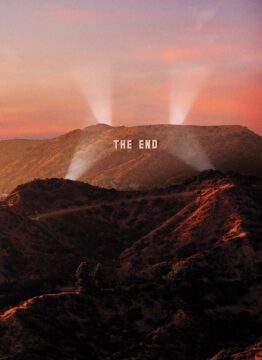 In 2012, at the age of thirty-two, the writer Alena Smith went West to Hollywood, like many before her. She arrived to a small apartment in Silver Lake, one block from the Vista Theatre—a single-screen Spanish Colonial Revival building that had opened in 1923, four years before the advent of sound in film. Smith was looking for a job in television. She had an MFA from the Yale School of Drama, and had lived and worked as a playwright in New York City for years—two of her productions garnered positive reviews in the Times. But playwriting had begun to feel like a vanity project: to pay rent, she’d worked as a nanny, a transcriptionist, an administrative assistant, and more. There seemed to be no viable financial future in theater, nor in academia, the other world where she supposed she could make inroads.
In 2012, at the age of thirty-two, the writer Alena Smith went West to Hollywood, like many before her. She arrived to a small apartment in Silver Lake, one block from the Vista Theatre—a single-screen Spanish Colonial Revival building that had opened in 1923, four years before the advent of sound in film. Smith was looking for a job in television. She had an MFA from the Yale School of Drama, and had lived and worked as a playwright in New York City for years—two of her productions garnered positive reviews in the Times. But playwriting had begun to feel like a vanity project: to pay rent, she’d worked as a nanny, a transcriptionist, an administrative assistant, and more. There seemed to be no viable financial future in theater, nor in academia, the other world where she supposed she could make inroads.
For several years, her friends and colleagues had been absconding for Los Angeles, and were finding success. This was the second decade of prestige television: the era of Mad Men, Breaking Bad, Homeland, Girls. TV had become a place for sharp wit, singular voices, people with vision—and they were getting paid. It took a year and a half, but Smith eventually landed a spot as a staff writer on HBO’s The Newsroom, and then as a story editor on Showtime’s The Affair in 2015.
More here.
 Will you please consider becoming a supporter of 3QD by clicking here now? We wouldn’t ask for your support if we did not need it to keep the site running. And, of course, you will get the added benefit of no longer seeing any distracting ads on the site. Thank you!
Will you please consider becoming a supporter of 3QD by clicking here now? We wouldn’t ask for your support if we did not need it to keep the site running. And, of course, you will get the added benefit of no longer seeing any distracting ads on the site. Thank you!
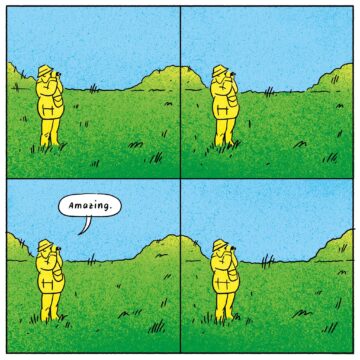 In some birding circles, people say that anyone who looks at birds is a birder — a kind, inclusive sentiment that overlooks the forces that create and shape subcultures. Anyone can dance, but not everyone would identify as a dancer, because the term suggests, if not skill, then at least effort and intent. Similarly, I’ve cared about birds and other animals for my entire life, and I’ve written about them throughout my two decades as a science writer, but I mark the moment when I specifically chose to devote time and energy to them as the moment I became a birder.
In some birding circles, people say that anyone who looks at birds is a birder — a kind, inclusive sentiment that overlooks the forces that create and shape subcultures. Anyone can dance, but not everyone would identify as a dancer, because the term suggests, if not skill, then at least effort and intent. Similarly, I’ve cared about birds and other animals for my entire life, and I’ve written about them throughout my two decades as a science writer, but I mark the moment when I specifically chose to devote time and energy to them as the moment I became a birder. Few computer science breakthroughs have done so much in so little time as the artificial intelligence design known as a transformer. A transformer is a form of deep learning—a machine model based on networks in the brain—that researchers at Google
Few computer science breakthroughs have done so much in so little time as the artificial intelligence design known as a transformer. A transformer is a form of deep learning—a machine model based on networks in the brain—that researchers at Google  The system that evolved in the last quarter of the twentieth century on both sides of the Atlantic came to be called neoliberalism. “Liberal” refers to being “free,” in this context, free of government intervention including regulations. The “neo” meant to suggest that there was something new in it; in reality, it was little different from the liberalism and laissez-faire doctrines of the nineteenth century that advised: “leave it to the market.”
The system that evolved in the last quarter of the twentieth century on both sides of the Atlantic came to be called neoliberalism. “Liberal” refers to being “free,” in this context, free of government intervention including regulations. The “neo” meant to suggest that there was something new in it; in reality, it was little different from the liberalism and laissez-faire doctrines of the nineteenth century that advised: “leave it to the market.” I
I Suddenly, everyone is talking about aliens. After decades on the cultural margins, the question of life in the Universe beyond Earth is having its day in the sun. The next big multibillion-dollar space telescope (the successor to the James Webb) will be tuned to search for signatures of alien life on alien planets and NASA has a robust, well-funded programme in astrobiology. Meanwhile, from breathless newspaper articles about unexplained navy pilot sightings to United States congressional testimony with wild claims of government programmes hiding crashed saucers, UFOs and UAPs (unidentified anomalous phenomena) seem to be making their own journey from the fringes.
Suddenly, everyone is talking about aliens. After decades on the cultural margins, the question of life in the Universe beyond Earth is having its day in the sun. The next big multibillion-dollar space telescope (the successor to the James Webb) will be tuned to search for signatures of alien life on alien planets and NASA has a robust, well-funded programme in astrobiology. Meanwhile, from breathless newspaper articles about unexplained navy pilot sightings to United States congressional testimony with wild claims of government programmes hiding crashed saucers, UFOs and UAPs (unidentified anomalous phenomena) seem to be making their own journey from the fringes. Because the likelihood of
Because the likelihood of 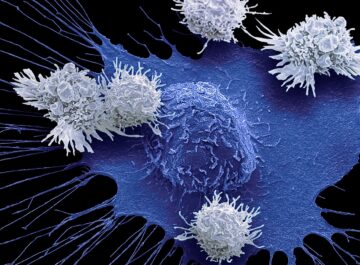 US drug regulators dropped a bombshell in November 2023 when they announced an investigation into one of the most celebrated cancer treatments to emerge in decades. The US Food and Drug Administration (FDA) said it was looking at whether a strategy that involves engineering a person’s immune cells to kill cancer was leading to new malignancies in people who had been treated with it.
US drug regulators dropped a bombshell in November 2023 when they announced an investigation into one of the most celebrated cancer treatments to emerge in decades. The US Food and Drug Administration (FDA) said it was looking at whether a strategy that involves engineering a person’s immune cells to kill cancer was leading to new malignancies in people who had been treated with it. In my essay “
In my essay “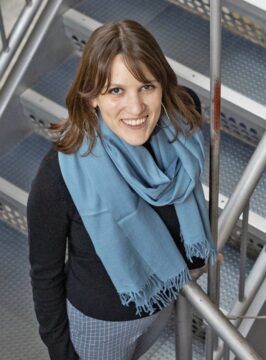 Start talking to
Start talking to 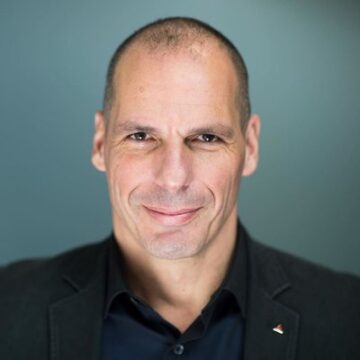 If we do pay attention, it is not hard to see that capital’s mutation into what I call cloud capital has demolished capitalism’s two pillars: markets and profits. Of course, markets and profits remain ubiquitous—indeed, markets and profits were ubiquitous under feudalism too—they just aren’t running the show anymore. What has happened over the last two decades is that profit and markets have been evicted from the epicenter of our economic and social system, pushed out to its margins, and replaced. With what? Markets, the medium of capitalism, have been replaced by digital trading platforms which look like, but are not, markets, and are better understood as fiefdoms. And profit, the engine of capitalism, has been replaced with its feudal predecessor: rent. Specifically, it is a form of rent that must be paid for access to those platforms and to the cloud more broadly. I call it cloud rent. As a result, real power today resides not with the owners of traditional capital, such as machinery, buildings, railway and phone networks, industrial robots. They continue to extract profits from workers, from waged labor, but they are not in charge as they once were. They have become vassals in relation to a new class of feudal overlord, the owners of cloud capital. As for the rest of us, we have returned to our former status as serfs, contributing to the wealth and power of the new ruling class with our unpaid labor—in addition to the waged labor we perform, when we get the chance.
If we do pay attention, it is not hard to see that capital’s mutation into what I call cloud capital has demolished capitalism’s two pillars: markets and profits. Of course, markets and profits remain ubiquitous—indeed, markets and profits were ubiquitous under feudalism too—they just aren’t running the show anymore. What has happened over the last two decades is that profit and markets have been evicted from the epicenter of our economic and social system, pushed out to its margins, and replaced. With what? Markets, the medium of capitalism, have been replaced by digital trading platforms which look like, but are not, markets, and are better understood as fiefdoms. And profit, the engine of capitalism, has been replaced with its feudal predecessor: rent. Specifically, it is a form of rent that must be paid for access to those platforms and to the cloud more broadly. I call it cloud rent. As a result, real power today resides not with the owners of traditional capital, such as machinery, buildings, railway and phone networks, industrial robots. They continue to extract profits from workers, from waged labor, but they are not in charge as they once were. They have become vassals in relation to a new class of feudal overlord, the owners of cloud capital. As for the rest of us, we have returned to our former status as serfs, contributing to the wealth and power of the new ruling class with our unpaid labor—in addition to the waged labor we perform, when we get the chance.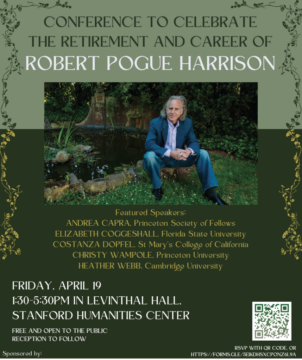 It is today my belief that once ordinary language is laughed out of the room, philosophical theories are no longer held responsible at all to the ways we actually speak and actually live. And aren’t the humanities ultimately for a good part connected to how we actually speak and live? To me, it is clear that the descriptions of human life we find in the novels of Samuel Beckett or in the poetry of Giacomo Leopardi are not mere entertainment. In my view, and among other things, they teach us to perceive and describe what goes on in social and individual life. To echo what Hilary Putnam once said, contempt for ordinary language is, at bottom, contempt for the humanities.
It is today my belief that once ordinary language is laughed out of the room, philosophical theories are no longer held responsible at all to the ways we actually speak and actually live. And aren’t the humanities ultimately for a good part connected to how we actually speak and live? To me, it is clear that the descriptions of human life we find in the novels of Samuel Beckett or in the poetry of Giacomo Leopardi are not mere entertainment. In my view, and among other things, they teach us to perceive and describe what goes on in social and individual life. To echo what Hilary Putnam once said, contempt for ordinary language is, at bottom, contempt for the humanities. T
T What would it mean to subtract context from writing, in each and every sense of “context” that Derrida proposes here? And would this be a remotely helpful exercise for thinking about the relation between text and context in literary studies? It’s hard to see how it could be. Even the strongest statements I can think of urging critics to turn away from context—take Rita Felski’s essay “Context Stinks!,” the last chapter of her Limits of Critique, or Joseph North’s arguments against the historicist/contextualist paradigm in Literary Criticism: A Concise Political History—even these apparently hardline positions in no way advocate for a total absenting of every form of contextual consideration. Rather, each seeks to limit appeals to certain contexts in order to boost the visibility of others. North, for example, seeks to challenge the priority placed on historical scholarship in order to shed light on present contexts of aesthetic education. For him, historical scholarship has become overly specialized and no longer realizes its vocation “to intervene in the ‘culture as a whole.’”
What would it mean to subtract context from writing, in each and every sense of “context” that Derrida proposes here? And would this be a remotely helpful exercise for thinking about the relation between text and context in literary studies? It’s hard to see how it could be. Even the strongest statements I can think of urging critics to turn away from context—take Rita Felski’s essay “Context Stinks!,” the last chapter of her Limits of Critique, or Joseph North’s arguments against the historicist/contextualist paradigm in Literary Criticism: A Concise Political History—even these apparently hardline positions in no way advocate for a total absenting of every form of contextual consideration. Rather, each seeks to limit appeals to certain contexts in order to boost the visibility of others. North, for example, seeks to challenge the priority placed on historical scholarship in order to shed light on present contexts of aesthetic education. For him, historical scholarship has become overly specialized and no longer realizes its vocation “to intervene in the ‘culture as a whole.’” Evidently, the time is ripe for a survey of the branch of cultural production concerned with the end of the world. And yet, as Lynskey points out, tales have been told about it for as long as we’ve been doing story. J G Ballard, whose work is given rich and perceptive attention in the chapter ‘Catastrophe’, wrote in 1977: ‘I would guess that from man’s first inkling of this planet as a single entity existing independently of himself came the determination to bring about its destruction.’
Evidently, the time is ripe for a survey of the branch of cultural production concerned with the end of the world. And yet, as Lynskey points out, tales have been told about it for as long as we’ve been doing story. J G Ballard, whose work is given rich and perceptive attention in the chapter ‘Catastrophe’, wrote in 1977: ‘I would guess that from man’s first inkling of this planet as a single entity existing independently of himself came the determination to bring about its destruction.’ Most of us think of inflammation as the redness and swelling that follow a wound, infection or injury, such as an ankle sprain, or from overdoing a sport, “tennis elbow,” for example. This is “acute” inflammation, a beneficial immune system response that encourages healing, and usually disappears once the injury improves.
Most of us think of inflammation as the redness and swelling that follow a wound, infection or injury, such as an ankle sprain, or from overdoing a sport, “tennis elbow,” for example. This is “acute” inflammation, a beneficial immune system response that encourages healing, and usually disappears once the injury improves.